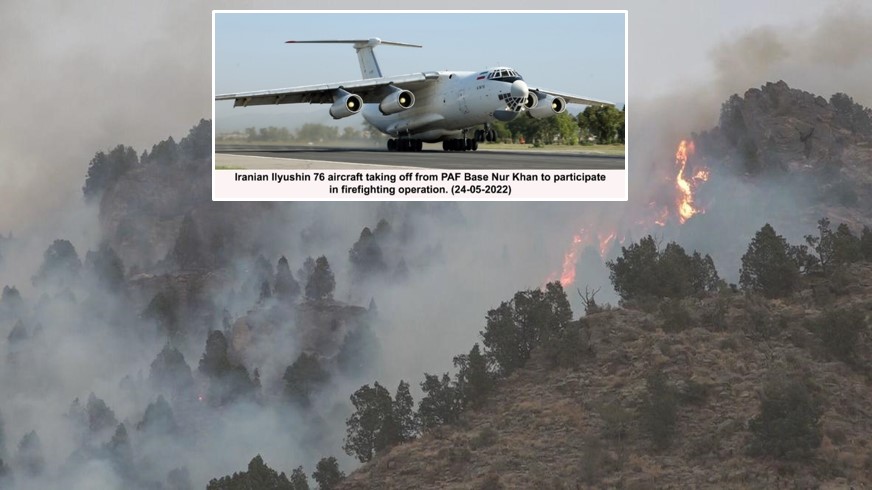Infocus in its earlier blog had pointed out the rising incidents of forest fires in Pakistan, involving a host of events in Islamabad, Abbottabad and Baluchistan in last two weeks. However, the blaze in Baluchistan’ Shirani forests of pine and olive trees exposed badly Pakistan’ incapability to counter this calamity.
Though the eruption of spontaneous forest fires has become more frequent in recent times, however the phenomenon has been especially fierce in 2022 owing to the ongoing record-breaking heatwave. Located at the juncture of Balochistan and Khyber-Pakhtunkhwa (KPK), the wildfire started on the KPK’ side but due to strong winds, it spread to other areas, including Sherani and Musakhail, and affected centuries-old forests in a 15-kilometre area and the people of the region suffered losses running into billions of rupees.
Inability against Forest Fires
There is no denying, these wildfires are largely due to climate change patterns, which are also responsible for the soaring temperatures being experienced across the country. However, the authorities’ tackling of these fires exposes the government’s forest fire management and disaster response systems as underprepared to handle freak climatic events. Despite the passage of nearly three weeks, the fire wasn’t brought under control, until plane from Iran came to put out the blaze.
A host of government authorities involved in firefighting rescue works in the Shirani forests. The army, provincial and federal disaster management authorities and other departments strugled to douse the flames, but in vain. They sprayed chemicals and water via helicopters but in limited capacity. “Fire is mostly on mountain tops (10,000 feet high) away from population centres but continues to spread due to hot weather, inaccessible nature of the terrain and dry winds; nearest village is approximately eight to 10 km away from the location of the fire,” the Inter-Services Public Relations reveals in a statement. A Frontier Corps wing and two army helicopters, along with local administration and Levies have been employed in firefighting and relief efforts. Three local volunteers also lost their lives while three others badly injured.
The Ilyushin 76 Aircraft
According to a Federal Minister belonged to Baluchistan, the Iranian firefighting aircraft played an important role in controlling the fire. The aircraft, which can carry 40 tons of water in one go, started its operation couple of days ago. The plane, Ilyushin 76, is the “biggest firefighter aircraft” in the world and landed at Rawalpindi’s Nur Khan Airbase in Punjab. It is from here, the plane used to carry out its flying operations. Because there is no any such airport in Baluchistan, which has the capacity to accommodate a bigger rescue plane like Ilyushin 76.
Loss of Pine Forests
Pine trees dates back more than 1,000-1,500 years old in the Shirani forest, located in the Koh e Sulaiman range. These forests are part of the world’s largest pine forest. The entire forest spans over more than 26,000 acre, producing 650 to 675 metric tons pine nuts of worth Rs. 2.5 billion. A pine tree is a precious tree which starts giving fruit after 25 years. And, pine nuts are one of the most expensive dry fruits in Pakistan and all over world. But large patches of forest, involving hundreds of pine trees have been damaged in this wildfire. As heat returns in June, the risk of more fires remains.
By
Editorial, Infocus


